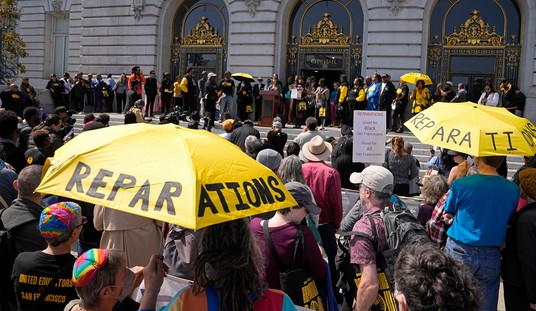The single-biggest mistake in the Paulson bank-rescue-plan marketing effort has been the failure to explain clearly how taxpayers are going to recoup $700 billion used to buy toxic assets at auction in order to unfreeze the banking system. In other words, folks don’t understand how taxpayers will be paid back, and may actually make profits, which will enable the new government debt to be erased after the Treasury bank-rescue is completed.
Here’s the key point: Any loan package bought by the Treasury will be 100 percent taxpayer owned. Period.
Let’s walk through this hypothetical for a moment. Through a market-driven auction, the Treasury will purchase some dollar amount — say $100 billion — of loans that banks will sell. The Treasury will then buy those loans at the prices that fill the auction, starting with the lowest prices and working up. Now, the Treasury will hold those bonds either to maturity or for a sale in the open market if rising prices in the market make that sale attractive. In other words, suppose the Treasury buys a bond package at 20 cents on the dollar. They hold it for a while, and if market conditions improve, they sell it for 50 cents on the dollar to some buyer (e.g., an investment fund, a private-equity fund, a hedgie). The Treasury will make the sale at the higher price in order to gain a profit for taxpayers.
In the meantime, as the Treasury holds the loans, the government will get monthly cash-flows coming in on the mortgages, or on any other loans that it owns. So it is win-win for taxpayers. First, taxpayers get the cash flow generated by the assets. (Something like a 10 percent interest rate.) Second, if the loan is sold for profit, the taxpayers will own that profit. And the new law must of course stipulate that all the cash flows and/or profits go for debt-reduction to protect taxpayers.
I don’t think a lot of folks understand this win-win scenario. Let me repeat: The taxpayers own the bonds the Treasury buys; the taxpayers own the cash flows generated by the bonds; the taxpayers own the profits when the bonds are sold; and the taxpayers benefit when the profits and cash flows are used to pay-down government debt.
Recommended
Actually, for taxpayers, it’s a win-win-win-win.
Think about this. The troubled assets purchased by the Treasury right now are likely to be very under-priced because of the chaotic and frozen market conditions. But over time, through monthly cash-flow payments or through loan sales, taxpayers will get all their money back and in great likelihood a handsome profit.
I have been in conversation with leading House Republicans all day. And they understand these key points. Unfortunately, this understanding did not materialize in their original meeting with Mr. Paulson a few days ago. But now the actual reality is sinking in.
Another point: Republican leader Eric Cantor has an excellent idea for a federal bond insurance guarantee for straight mortgage-backed paper, financed by private-sector insurance premiums. That will improve investor confidence in mortgage bonds and will make those bonds highly marketable. Importantly, senior Treasury officials have told me that Mr. Paulson will accept the insurance idea as an option in the final bill, alongside the ability of the Treasury to purchase distressed assets.
Sources also tell me that other conditions will be necessary to bring the House GOP along. First, the ACORN slush fund must be removed. Second, the so-called union proxy to run a slate of corporate directors is a big problem. Third, all profits from the Treasury rescue mission must be used to reduce the national debt — 100 percent. Fourth, Republican members are opposed to bankruptcy judges setting mortgage terms and interest rates (Sen. Obama also is opposed). Fifth, the so-called government equity ownership of banks is distasteful because it effectively creates a corporate tax increase on banks at a time when they are struggling. And last, the Treasury secretary’s request for $700 billion is regarded as way too high.
Essentially, House Republican leaders want a slimmer, cleaner Paulson plan supplemented by Mr. Cantor’s mortgage-bond insurance program. I think it’s a good package that would be great news for stock and bond markets that are now ailing badly. It would set the stage for a gradual return to normalcy on the part of bank lenders, including loans to small businesses, consumers, and homeowners. It would be a pro-growth package at a time when the economy desperately needs a prosperity tonic.

























Join the conversation as a VIP Member